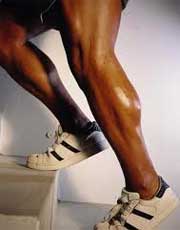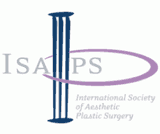Calf augmentation
 Calves are body parts considered by males and females as important aesthetic units playing a key role to sexual attraction. Unfortunately, not everybody is pleased with their calves’ shape or size and many think that they have very thin and unattractive calves. There are women who avoid wearing short skirts or tight jeans because they believe that their calves are mingy and ugly.
Calves are body parts considered by males and females as important aesthetic units playing a key role to sexual attraction. Unfortunately, not everybody is pleased with their calves’ shape or size and many think that they have very thin and unattractive calves. There are women who avoid wearing short skirts or tight jeans because they believe that their calves are mingy and ugly.
Working out may be a good friend of ours, but it only reshapes the calf.
 Calf augmentation is a technique using either autologous grafts (fat tissue from the patient’s body) or silicone implants. In both cases, the material is placed on specific points on the calf. The procedure may be performed for aesthetic purposes or be required after an injury. Regarding the silicone implant, it is a very soft and applicable material for the calf.
Calf augmentation is a technique using either autologous grafts (fat tissue from the patient’s body) or silicone implants. In both cases, the material is placed on specific points on the calf. The procedure may be performed for aesthetic purposes or be required after an injury. Regarding the silicone implant, it is a very soft and applicable material for the calf.
The implant is placed subfascially, i.e. under the fascia, and covers the gastrocnemius muscle, improving the shape and size of the calf.
The surgery
The patient’s wish is quite significant, yet every patient must be realistic. There are many times when candidates wish each calf to be augmented individually, i.e. their calves do not share the implant size. The same applies when patients opt for fat transfer.
In such cases, visiting the plastic surgeon is really crucial. During the consultation, the plastic surgeon will examine you and make all necessary measurements in order to determine the applicable technique. The technique is carried out under light anesthesia and the patient is on a prone position (face down), given the procedure takes place under the knees. The plastic surgeon uses a specialized instrument to open the pocket, i.e. the space to place the implant. In case the technique involves fat transfer, this is done with special fat transfer cannulas, and always on the same height.
 Postoperative recovery requires resting for a week. In case of fat transfer, less than a week is required in order to avoid leg edema (swelling).
Postoperative recovery requires resting for a week. In case of fat transfer, less than a week is required in order to avoid leg edema (swelling).


Calf augmentation. Photos Before - after












